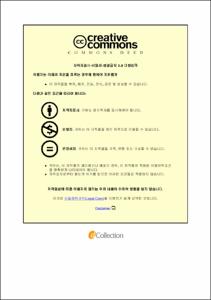PIBF1 in breast cancer :Candidate for predictive factor and effect on taxane- based chemotherapy response
- Alternative Title
- 유방암에서 PIBF1 의 예측인자에 대한 가능성과 탁센 기반 항암치료 반응성과의 연관성에 관한 연구
- Abstract
- Background
With the increasing incidence of breast cancer and the array of available treatment choice, it is imperative to investigate tumor cell-associated markers that can predict the disease’s nature. Progesterone-induced blocking factor 1 (PIBF1), originally associated with pregnancy-induced immunity, is produced in tumors to evade maternal immunity. PIBF1 is revealed to overexpressed in several cancers, including breast, cervical and lymphoma. However, little research exists on PIBF1’ role in breast cancer and its clinical outcomes. We thus studied the link between PIBF1 expression and prognosis, as well as its influence on chemotherapy response.
Materials and Methods
Samples, obtained from 231 high risk TNBC breast cancer patients underwent surgery between 2008 and 2013, with lymph node metastasis, received taxane-based adjuvant chemotherapy and selected 238 non TNBC patients matched with TNBC patients were selected. Anti-PIBF1 antibody was used for immunohistochemical detection of the PIBF1 protein in tissues, whose sections were analyzed with cut- off value of 3 (intensity plus proportion). Kaplan-Meier survival analysis was used to assess the probability of overall survival (OS). Utilizing the colonogenic unit assay and employing knockdown methodologies in breast cancer cell lines, we examined the correlation between PIF1 expression and chemosensitivity.
Results
In a study of 469 breast cancer patients, both non-TNBC (n = 238) and TNBC (n = 231), those with PIBF1 expression manifested a lower histologic grade (p < 0.001), reduced p53 (p < 0.001) and decreased Ki-67 (p < 0.001) compared to their non-expressing counterparts. This differential was particularly pronounced in non-TNBC subset. Survival analysis revealed a significant difference in OS for patients with PIBF1, with non-TNBC patients showing superior outcomes. In multivariable analysis with OS, PIBF1 expression shows relation with better prognosis and the statistical significance was borderline (hazard ratio = 0.44, 95% confidence interval = 0.18-1.11, p = 0.082). In vitro experiments revealed a correlation between PIBF1 expression in breast cancer cell lines (BT549, HCC70, BT20, HS578T) and their sensitivity to paclitaxel, with certain cell lines showing significant viability reductions and also resisting the treatment after PIBF1 knockdown.
Conclusions
We observed a correlation between PIBF1 expression and better prognosis in breast patients with nodal metastasis undergoing taxane-based chemotherapy, especially in non-TNBC cohort. Additionally, we discerned a relationship between PIBF1 and chemosensitivity in our in vitro studies. These insights suggest the potential utility of PIBF1 as a predictive marker in determining therapeutic approaches.
- Issued Date
- 2024
- Awarded Date
- 2024-02
- Type
- Dissertation
- Keyword
- breast cancer; chemotherapy; predictive factor
- Alternative Author(s)
- Eunju Shin
- Affiliation
- 울산대학교
- Department
- 일반대학원 의학과
- Advisor
- 손병호
- Degree
- Doctor
- Publisher
- 울산대학교 일반대학원 의학과
- Language
- kor
- Rights
- 울산대학교 논문은 저작권에 의해 보호받습니다.
- Appears in Collections:
- Medicine > 2. Theses (Ph.D)
- 파일 목록
-
-
Download
 200000739655.pdf
기타 데이터 / 2.5 MB / Adobe PDF
200000739655.pdf
기타 데이터 / 2.5 MB / Adobe PDF
-
Items in Repository are protected by copyright, with all rights reserved, unless otherwise indicated.